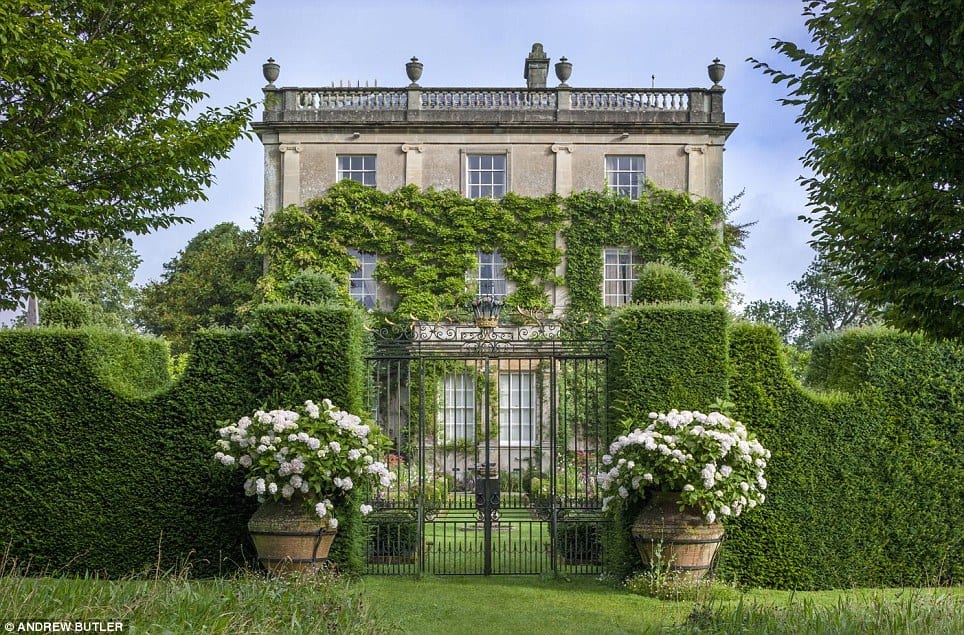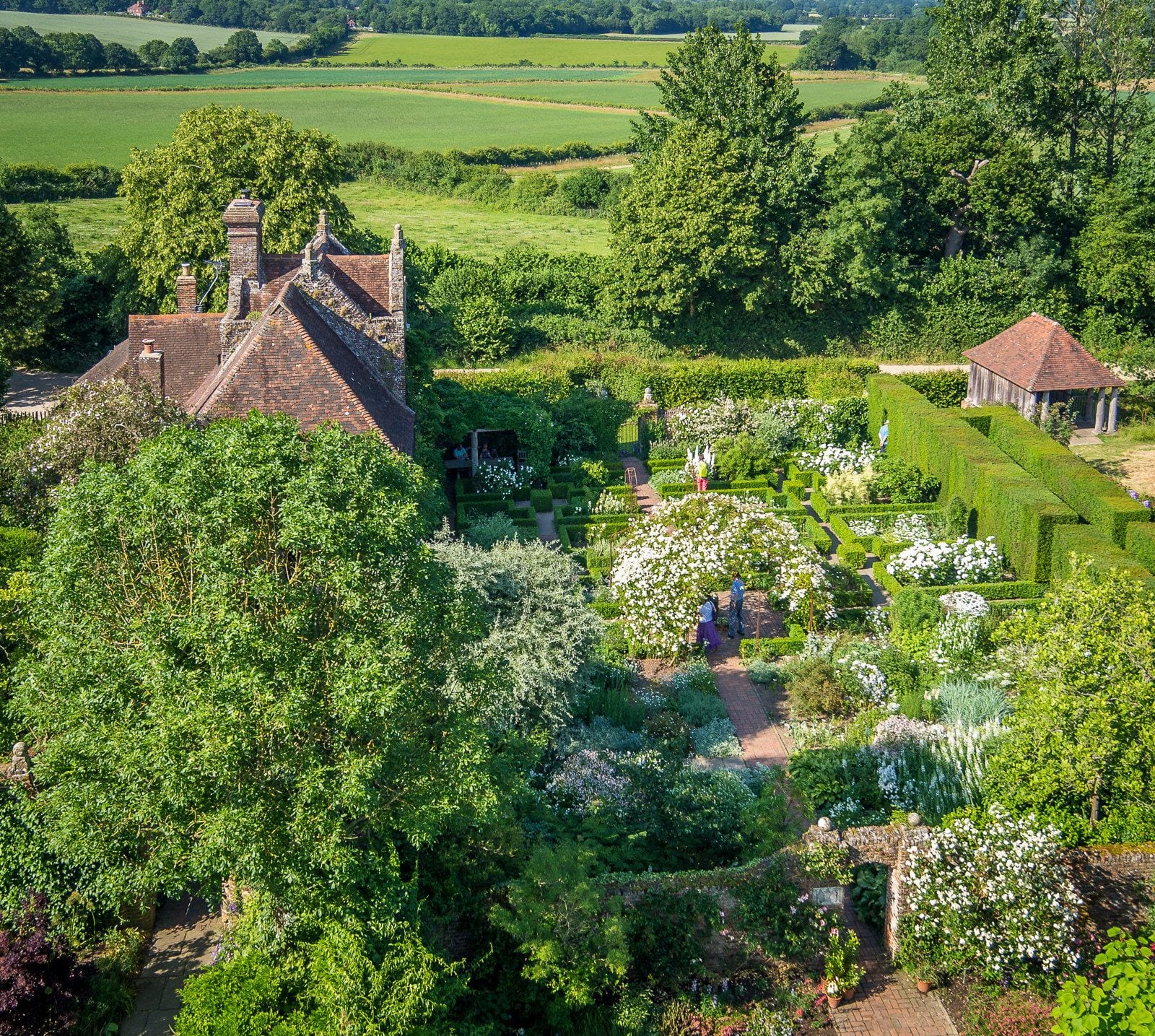The White Garden
In the garden, every person may be their own artist without apology or explanation. Each within their green enclosure is a creator, and no two shall reach the same conclusion.
Louise Beebe Wilder
![]()
In 1935, Louise Beebe Wilder wrote a book entitled What Happens in My Garden. One of the chapters is called, A White Garden in Wales, which I first read over 20 years ago—and it has stayed with me ever since. It was shortly after that I had occasion to visit one of the most famous gardens in the world, Sissinghurst Castle Garden in the Weald of Kent, England, home 16th century home of the prolific English writer Vita Sackville-West and her husband, British politician and diplomat Harold Nicolson, who together and with the greatest of care and commitment created the magnificent garden that today is operated by The National Trust for the benefit of the public.
Born into a wealthy Baltimore family in 1878, Louise and her husband, architect Walter Beebe, raised their two children on a 200-acre estate called BalderBrae in then-rural Pomona, New York. It is there she wrote her first book, My Garden, and exhibited her ingenuity as a gardener when she described bordering her first flower beds with clothespins. Always at one with nature, she found serenity strolling through her garden in the moonlight, taking in the touch, perfume, texture, and beauty a garden instills.
She and her family then moved to the affluent suburb of Bronxville, north of New York City. There she devoted her energies to founding the Working Gardeners Club of Bronxville in 1926, serving as vice-president of the Federated Garden Clubs of New York, and as a director and member of the Advisory Council of the New York Botanical Garden. In 1937, shortly before her death in April 1938 at the age of sixty, the Garden Club of America awarded her the coveted Gold Medal for Horticultural Achievement.
Today Louise is heralded as one of America’s greatest garden writers and one of the most famous horticulturists of the 20th century. Between 1916 and 1937, she wrote nine of her eleven gardening books and numerous articles for magazines and newspapers, many of which were subsequently collected and published as books. She was especially interested in color in the garden—Color in My Garden (1918) is generally considered her finest book—rock gardens, and the varying scents of the garden, even to the scent of wild mushrooms and common herbs. She referred to such revelations as “adventures” and used that word as the title of her definitive book on the subject, Adventures with Hardy Bulbs (1936), explaining, “Adventure is of the mind—a mental attitude toward everyday events wherever experienced. Adventure may be met with any day, any hour, on one’s own doorstep, just around the corner; it may lurk in the subway, on a bus stop, in the garden.”
A White Garden in Wales
At the center of each man’s being, says Chesterton, is a dream. My pet dream for many years has been a white garden, set apart and inclosed within a shining green hedge. I never have come anywhere near to realizing this dream, never had space enough to be anything so special—or perhaps it is a horticultural self-control that has been lacking. Something. But since the mild summer evening on which I once saw a white garden beautifully carried out it has lingered in my mind as indeed “such stuff as dreams are made on,” and one of the loveliest gardens I ever saw.
This white garden was one of a series of gardens on a splendid estate in Wales, on the reiver Ely, not far from ancient Llandaff. It was planted entirely with white-flowering plants and inclosed, not in the close-clipped hedges of my desire, but by stone walls of warm pinkish gray. This was not, as might be supposed, cold in effect; the curious hue of the stone was warm and almost luminous and made a delightful background for the pale flowers. We saw this garden first at twilight, that witching hour, and through the tall iron gates, above which swung a Clematis starred with immense white blooms, the effect was almost as if a mist had crept up from the river and finding the haven of this quiet inclosure, had swirled around and about, rising here in wraith spires and turrets, ling there in gauzy breadths amidst the muted green. It is impossible to describe its beauty at this dim hour—so soft, so ethereal, so mysterious half-real it seemed. And yet when we saw it at noon of the next day it was no less arresting, though in a different way. It had become, so to speak, flesh and blood. Something you could draw boldly near to. Looking at it, we did not speak in whispers, as we had done the night before.
Now it would be natural to suppose that a garden planted wholly with white flowers would be bleak in effect, or at least very monotonous; but this was not at all the case. It was neither funereal not weddingish in appearance. It was frank and fresh and full of changing values. At twilight, of course, it seemed a little unreal, but isn’t that true of almost any garden at this hour when the hand of man is less apparent and mysterious agencies seem to have brought it into being? There are, as a matter of fact, almost no pure white flowers. I have seen Sweet Peas of an absolutely flat paper-whiteness, but for the moment I can call to mind no other flowers of such unrelieved pallor. A large proportion of so-called white flowers tend towards buff, or mauve, or bluish in the throat; the petals of many are delicately lined, or veined, or blotched with color—what we call cream-white, bluish-white or skimmed-milk white, and the name of those having a greenish cast is legion. Many flowers change from white to pink or even to deep rose or yellow as they age, while bunches of bright-hued stamens or stigmata often cast a glow over the whole flower. Things being as they are, there could not possibly be monotony of tone in a garden of white flowers.
And there is besides infinite diversity of texture; there will be the flat sheenless whites, the satin whites, the velvet whites, while the variety of form is as great as among other flowers—spires, wedges, flat corymbs, spikes, bursts of mist, trails, streamers, banners, and plumes, the lie along the ground, aspire slenderly, climb the walls and trellises, are hung from tree and shrub in infinite multiformity and contrast. And in addition, the foliage of the different plants and shrubs offers its own contrastive spice—the dark and light and yellow-greens with the many gray and silvery tones of the leaves quite preventing any monotonous duplication or harping recurrence of hue. It was plain, however, that this Welsh garden was the product of the most loving care and intelligent choice of material.
It was midsummer when we saw this white garden in Wales, and the flowers that held the stage of this season were chiefly great masses of wedge-headed Phloxes, tall and dwarf, the tall spires of Chimney and other Bellflowers, Boltonias, white Lilies, annuals in a wide variety, including Sweet Peas that were supported on trellises at the back of the border, Gladioli and Dahlias, and a few shrubs. The borders were edged with stone and spilling over this confining band in masses were white annul Pinks, Phlox Crummondi, Cupflower, Petunias, Frilly and plain, Verbenas, pale California Poppies, Sweet Alyssum, Carpathia Harebells, Heuchera Flaxflower, and the like. Here and there a climber came from the outer side and flung itself over the rim of the wall in tangled masses or long streamers, and more than one lingering Rose pressed a satin cheek against the warm-hued stone.
We talked with the gardener in charge and learned that this garden was cunningly planted to be as full of bloom as possible throughout the season and not, as is often the case with one-color gardens, for a short period only. Many spring- and summer-flowering bulbs were made use of a wide range of annual and perennial plants, shrubs, climbers, and trees of medium height and gracious blossoming. Various devices were employed to maintain the continuous bloom. Annuals raised elsewhere were transplanted to blank spaces left by departed bulbs and to fill other gaps in the flowery procession; Lilies and Heliotropes and Tuberoses in pots were dropped in wherever they would do the most good. The British are clever always appearing at the peak of perfection, and their climate is their ally rather than their antagonist in this worthy aim.
I sat on one of the white seats in the midst of this gracious garden and rested my notebook on the little table while the friendly gardener patiently enumerated the plants he made use of to keep the borders always fresh and blossomy. I am sure a little inclosed white garden, or even a winding border of white flowers against a green background, would be a possession of which one would not easily tire. It would always suggest peace and harmony, yet there would be no lack of interest. Frayed nerves would find it remedial.
NOTE: all irregular spellings are as in the original manuscript. Inclosed and inclosure are the correct and original spellings.
—Published in Garden Dreams, Illustrated and Edited by Ferris Cook. Stewart, Tabori & Chang (1991)




